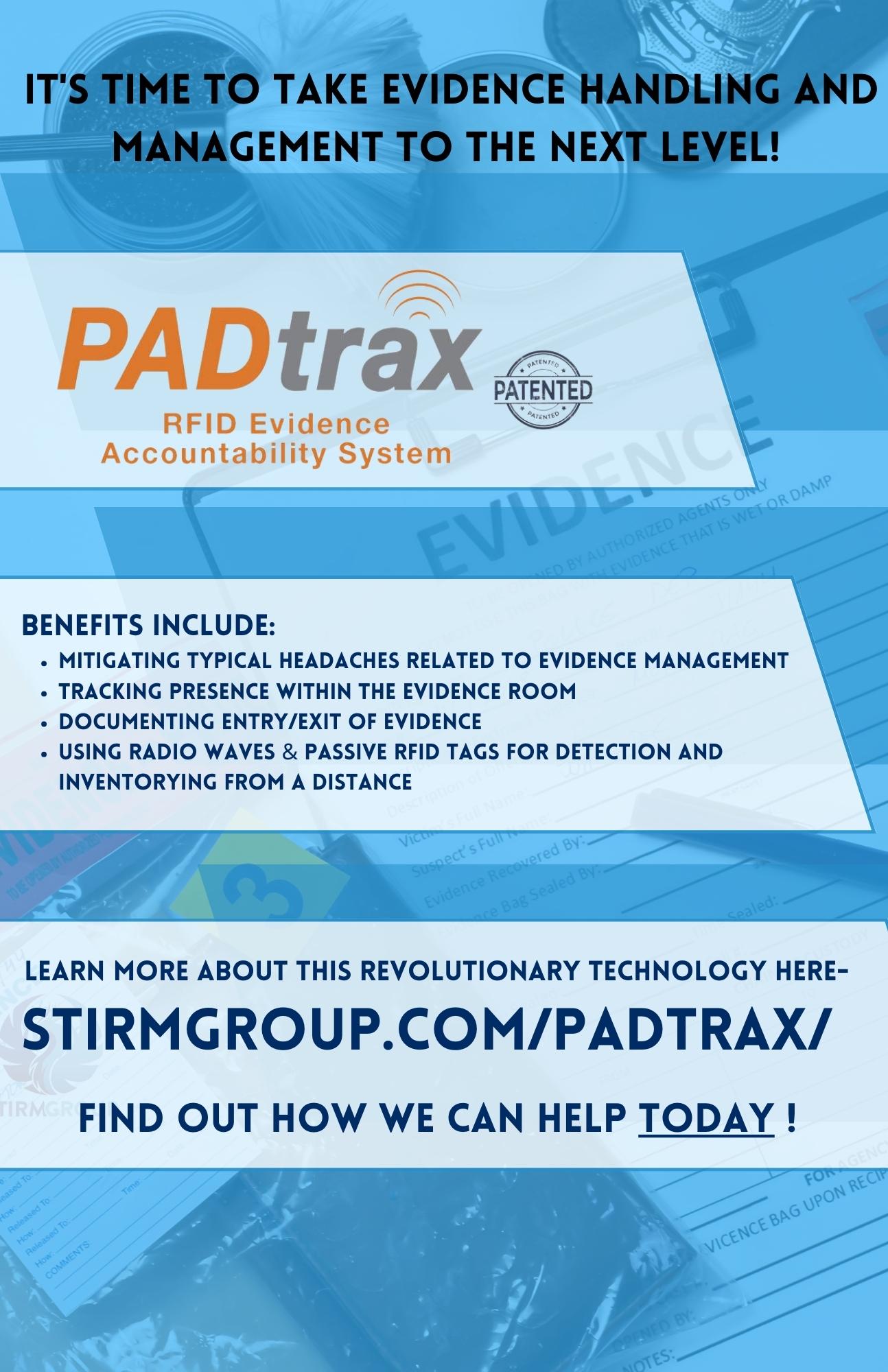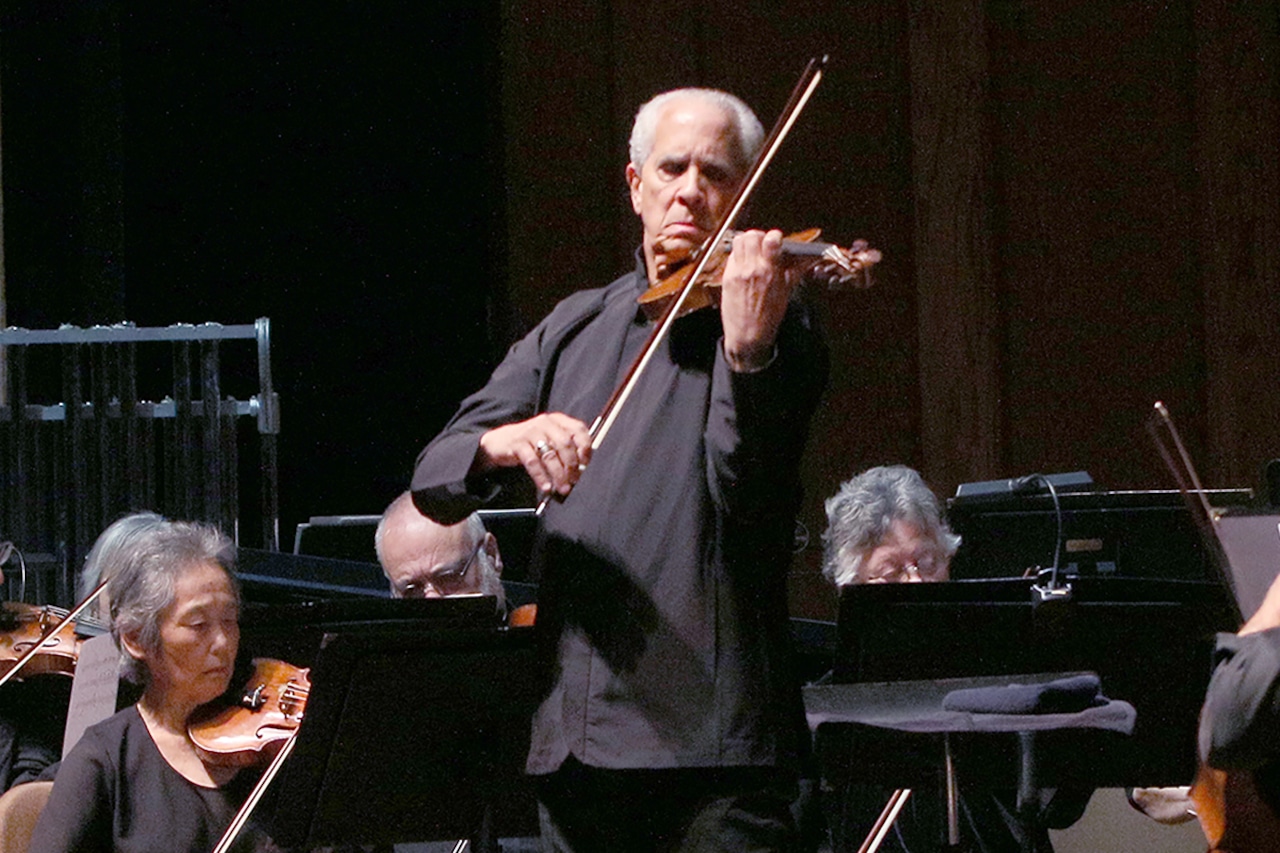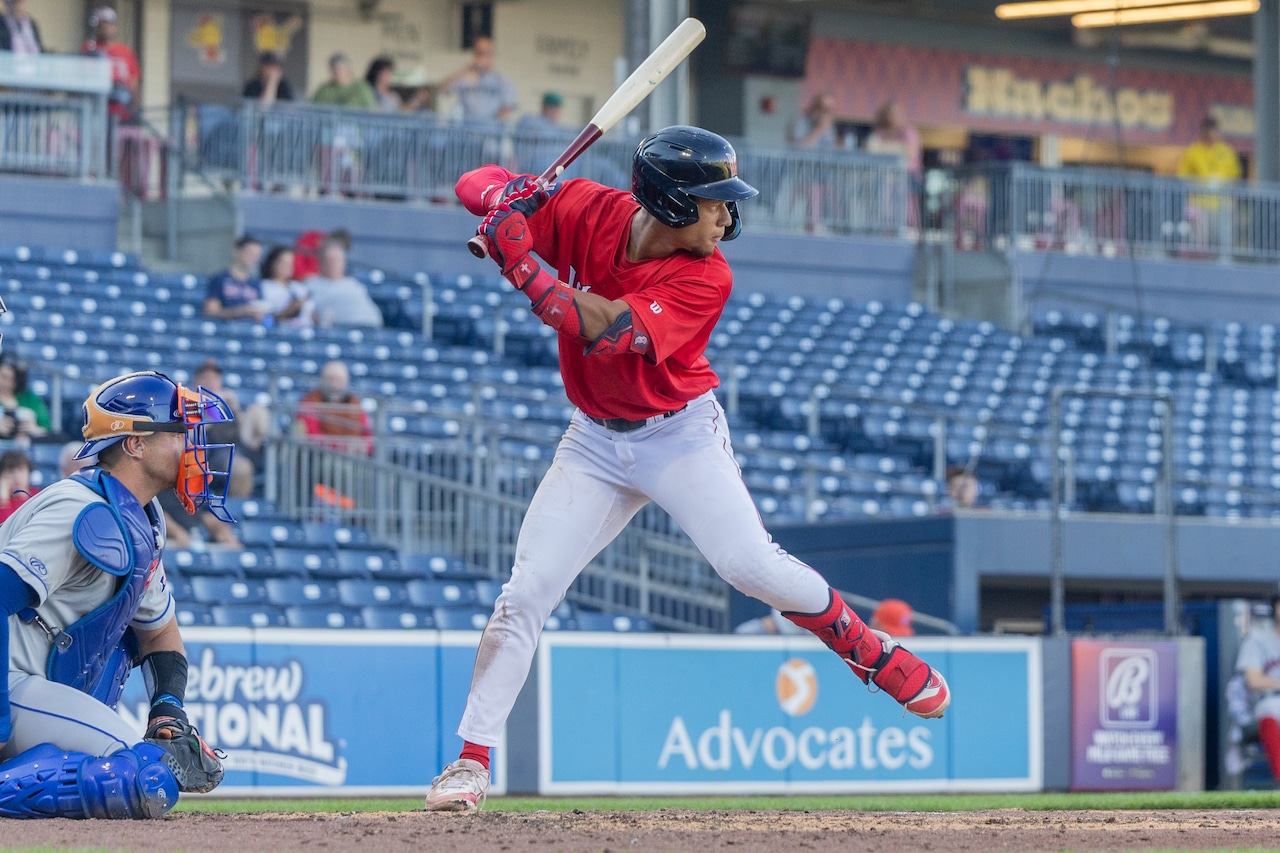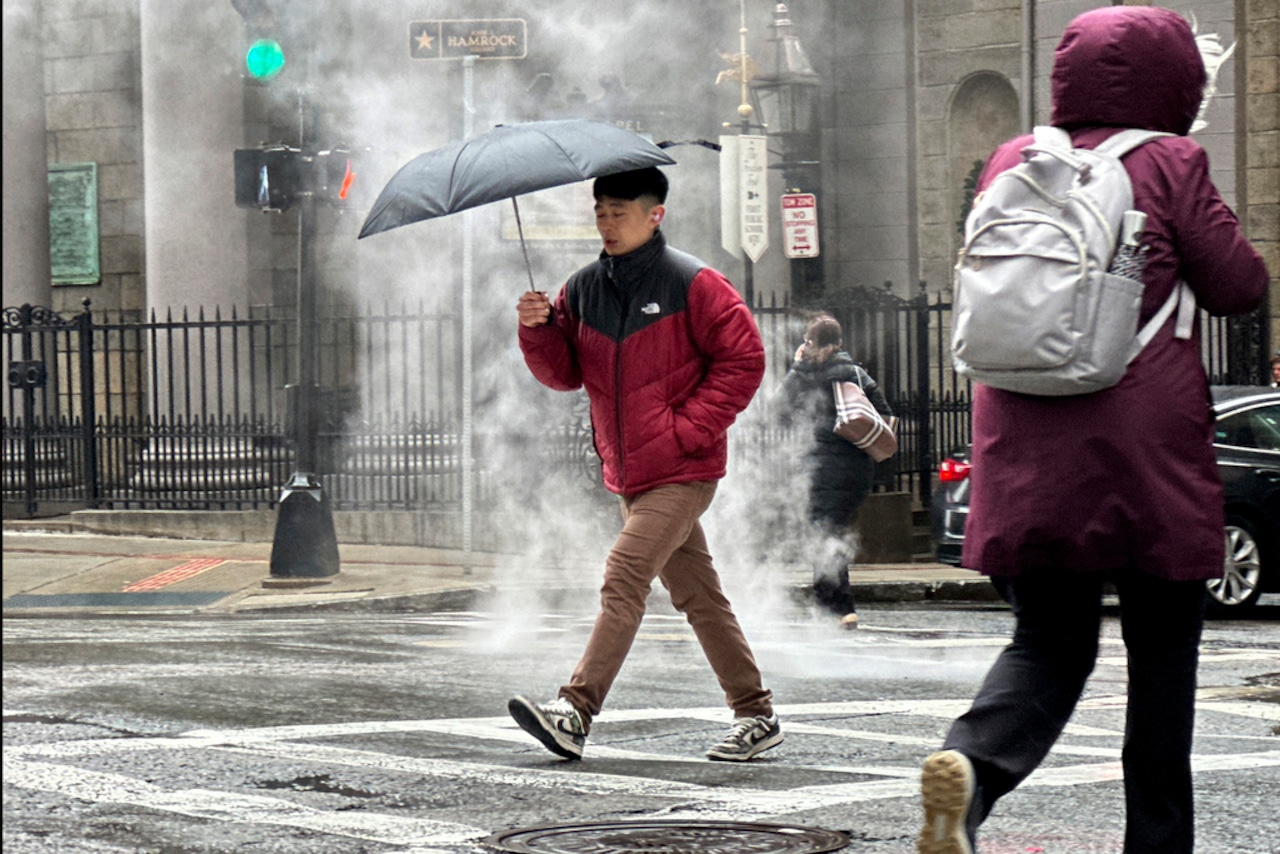Before a recent game, Alex Cora was answering a question from an out-of-town reporter seeking input on the Red Sox.
As Cora broke down the current roster, Cora almost casually made an observation about outfielder Rob Refsnyder.
“Rob, he’s one of our best players,” said Cora.
That characterization didn’t get challenged by anyone in attendance, and neither did the remark seem off the mark.But such an analysis would have been pretty far-fetched not long ago.
Rob Refsynder? You mean the 33-year-old journeyman now with his sixth organization? Rob Refsnyder, who’s never played as many as 90 games in a season? Rob Refsnyder who hit .248 last year?
That Rob Refsnyder?
BetMGM BET UP TO $1,500! BONUS BET REFUND AFTER A LOSS
STATES: AZ, CO, IA, IL, IN, KS, LA, MD, MI, NJ, OH, PA, TN, VA. Visit BetMGM.com for Terms and Conditions. 21 years of age or older to wager. MA Only. New Customer Offer. All promotions are subject to qualification and eligibility requirements. Rewards issued as non-withdrawable bonus bets. Bonus bets expire 7 days from issuance. In Partnership with MGM Springfield. Play it smart from the start with GameSense. GameSenseMA.com. Gambling Problem? Call 1-800-327-5050 or visit gamblinghelplinema.org. US Promotional Offers not available in New York.
Indeed, on the face of it, Refsnyder would not seem to fit the criteria of best player on any team. Solid…versatile….valuable…might all be used to fairly describe him.
But “one of our best” isn’t much of a stretch, if it’s a stretch at all. Refsnyder does a lot of little things right — from baserunning to getting on base to executing proper fundamentals. It doesn’t hurt that he’s slashing .325/.391/.480.
Refsnyder entered play Thursday with the second-highest OPS on the team, with his .871 OPS second only to Rafael Devers among all hitters. Not long ago typecast as a platoon player, Refsnyder has this season shown an ability to hit both lefties and righties equally well.
Against lefties, he has an .860 OPS; against righties, he had an .878 OPS. Defensively, Refsnyder is judged by defensive runs saved (DRS) as basically neutral, which seems like an underwhelming assessment of his play. But as recently as last week at Guaranteed Rate Field, Refsnyder, stepping in for the injured Tyler O’Neill, made two spectacular diving plays in right field. He’s capable of playing all three outfield spots.
And there are the intangibles. Refsnyder is the team’s oldest position player, and the fourth-oldest player on the roster, and has emerged as a clubhouse leader and one comfortable in that role.
From versatility to production to off-field contributions, Refsnyder has emerged as a key performer.
Part of his success this year is due to improved health. Last year, Refsnyder dealt with a right elbow issue that limited him at the plate.
“As much as I don’t like making excuses, I feel a lot healthier this year,” he said. “My right elbow wasn’t letting me do a lot of things that I would like to do and my mechanics got really, really bad. I wasn’t staying behind righties well.”
Regarded as a largely a platoon player for much of his career, Refsnyder emerged in 2022 as someone who could hit righties, too, (.792 OPS). This year finds him duplicating, if not exceeding, that season.
Ironically, a spring training injury which sidelined him for Opening Day may have been a positive development. Refsnyder broke his toe in March, but during his rehab — in both Fort Myers and a four-game assignment with Worcester — Refsnyder got the opportunity to see more righthanded pitching than he otherwise would have.
“I started building a little confidence down there,” said Refsnyder. “Then, obviously when you rehab at Triple A, you face righties, too. And then we had some injuries (in Boston) and that allowed me to play a little bit against righties. So yeah, honestly, getting hurt sucked but I had all the time in the world to work on my game and my hitting and things like that and experiment a little. At the big league level, you don’t want to experiment when you’re trying to compete and win games.
“But when you’re a little bit older and you have some of those opportunities, it’s nice to work in those low-pressure situations. Looking back, (getting hurt) helped a lot. It kind of gave me a foundation to grow on for this year.”
In part due to injuries to Trevor Story, Triston Casas and Tyler O’Neill, Alex Cora has been juggling different lineup combinations. Many of them have had Refsnyder hitting second (11 times) or third (17 times). Holding such a prominent spot in the Boston batting order is not something Refsnyder anticipated.
“I don’t take it for granted,” said Refsnyder. “My first experience in the big leagues was pinch-hitting or batting eighth or ninth. So I don’t take (these opportunities) for granted. I feel very fortunate.”
Refsnyder considered himself a classic late-bloomer who had to wait until he was 30 to be rewarded with some contractual security— a one-year extension for this year at $1.85 million with a $2 million club option for 2025 — and an assured place on a major league roster. Until then, he dealt with the usual indignities of a depth player — he experienced being optioned to the minor leagues, being platooned, released, and claimed on waivers.
“Development-wise, you’re trying to figure it out on the go,” he said. “You’re trying to survive, basically. My career path is why I’m a big believer in player development. If you surround yourself with really good coaches and guys who know what they’re talking about, you can get better — even at the major league level.
“I was fortunate enough to have some luck on my side. Signing minor league deals, you have to perform. Some luck went my way and I was able to keep afloat at the Triple A level while I was learning. And then, the alternate site (during the pandemic season of 2020) was also a blessing because you’re facing really good players but you have the luxury of trying a stance, or try this adjustment, and in real time see if they work. Looking back, it’s been a perfect storm of a lot of luck and running across some really good people.”
_________________
When it comes to the July 30 trade deadline, the trend in the game still revolves around the rental model, whereby players heading to free agency are auctioned off for teams out of contention.
Maybe that will eventually change, but for now, let’s assume that it remains the model.
Speculation is the Red Sox will have four marketable trade chips for the deadline: pitchers Nick Pivetta, Kenley Jansen and Chris Martin along with outfielder Tyler O’Neill. All four are eligible for free agency after this season.
Of the four, only Pivetta would seem to be somebody the Red Sox might want to retain. He’s 31 and has been remarkably durable. He likes playing in Boston, and at least theoretically, would be someone the Sox would be interested in extending.
But that doesn’t mean that the Red Sox couldn’t trade him and attempt to re-sign him this winter.
Martin and Jansen are older relievers whom the Sox could replace. Already, Liam Hendriks is under contract for 2025 in the closer’s role, and any number of current Red Sox bullpen pieces — Justin Slaten, Greg Weissert, Zack Kelly — could presumably take over from Martin as the primary set-up man next season.
O’Neill could have a role going forward. The Red Sox could use a righthanded power bat. But with Jarren Duran, Ceddanne Rafaela and Wilyer Abreu set and Roman Anthony not far off, the Red Sox have their outfield spoken for. And O’Neill’s injury history could make him a risky candidate for a long-term extension.
Let’s assume that the Red Sox make all four available. Which one would attract the biggest return? We asked a longtime MLB evaluator to rank the quartet.
Pivetta: “He would separate himself from the rest. He would get them the biggest haul. He’s pitched well enough. I expect most teams see him as a complementary starter, a middle-of-the-rotation option. The ability to log innings and take the ball every fifth day, that’s invaluable. From a consistency standpoint, he comes and goes. You watch him on a given night and he’s on the black, he’s mixing speeds and doing all the right things. And then you see him evaporate quick. I’m not sure what he would bring back, but probably an upper-level ready player and a lower-level legit prospect. (The better prospect would be) a lower-end Top 10 for sure, maybe a future quality starting pitcher.
Jansen: “With a team like Kansas City, take the money out of the equation. They’re dying to convince the owner they’re for real and they’ve got the ballpark issue, too, so they want to go for it. I guess it depends on what you see of him. I have to believe a couple of clubs would respect his experience and ability to get late-game outs. He’s throwing better now than earlier in the year, and he’s smart enough that the drop in velo isn’t a big concern. I could see them getting a pretty good prospect, maybe someone right now at High A, ready to move up to Double A soon. Baltimore and Philadelphia make some sense. The Phils have legitimate talent in their system. Would Dave (Dombrowski) trade one of the core prospects? Maybe not, but maybe he’d give you two pretty good guys outside of the core. And if (Jansen) agrees to pitch the eighth, that gives him more value. Don’t rule out (a return to the) Dodgers; they’re going to be looking for multiple bullpen arms.”
Martin: “This is the hardest one to project because of the mental health issue (Martin is currently on the IL due to anxiety). Teams will want to know they can depend on him, so that throws everything up in the air. But if he’s OK, he’s got some value. He throws strikes and he’s not afraid of the big moment. KC’s bullpen is underperforming and (the Royals) haven’t been able to come up with right solution.”
O’Neill: “He would bring something back, too. He’s made a good impression. He had worn out his welcome in St. Louis. But Tyler O’Neill is a good player. He’s flipped a switch, enough for a level of interest for the right team. Righthanded pop is something that’s so coveted. It’s hard to find it when you need it. There’s the durability factor to consider with him, but you’re talking about two months, not a long-term deal.”
________________
There is talk afoot about Major League Baseball “nationalizing” all of its games in the future, though it will be a challenge to get everybody on the same page.
Currently, viewers can watch their local team on a local outlet. In the Red Sox’ case, that means NESN. There are also national packages available on cable and satellite (the Extra Innings package), along with the streaming option at MLB.TV.
Problem, many games are blacked out locally. For instance, if a fan subscribes to either Extra Innings or MLB.TV in New England, Red Sox games are unavailable, to protect NESN’s rights.
Under a plan under consideration, MLB would eliminate blackouts and allow fans to purchase access to a streaming plan that could feature as many as 15 games daily, local team included.
There are huge obstacles however, not the least of which are existing deals with rights holders. For instance, the Los Angeles Dodgers have 14 years remaining on a 25-year deal they signed for more than $8 billion some 11 years ago. What happens to that deal and others like it?
Then there’s the handful of teams — the Red Sox (NESN), Chicago Cubs (Marquee Network) and Yankees (YES Network) — who own their own platforms. How does MLB incentivize teams to leave those deals and arrangements behind?
Expect that there will be plenty of disagreement between large and small market teams before a solution is found. But baseball realizes it has to do something: in survey after survey, focus group after focus group, the No. 1 complaint revolves around blackouts.
There’s also this: the TV landscape is shifting constantly. Not long ago, there were approximately 110 million cable households. But by the end of this year, thanks to cord-cutting, streaming and other options, that number is expected to drop to 60 million, or just over half of the industry’s high water mark.
Baseball needs a new delivery system for viewers. But getting there won’t be simple.






